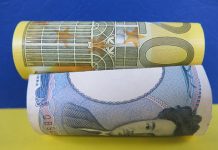Last week was brilliant for the major US indices but gloomy elsewhere. The S&P500 was slightly down on Friday, but the index posted its best weekly advance in a month on the back of a surprise easing in CPI figures and a not-too-hawkish Federal Reserve (Fed) statement. Nasdaq, on the other hand, closed last week having renewed record every session. The AI rally was fruitful.
Elsewhere than AI however, things were less cheery. SPDR’s energy sector fund for example continued to diverge negatively last week and fell around 3% over the course of the week as the negative divergence of the financials became more evident. The Russell 2000 fell to the lowest levels since May and US crude is consolidating near $78pb. It looks like the positive momentum is dying out.
And beyond the US, sentiment is gloomy: stocks in the Chinese CSI 300 fell below their 200-DMA and extended losses to more than 5% since the May peak. The latest data showed that home prices there slid at a faster pace in May despite all the efforts that the Chinese government puts in to stop the bleeding and industrial production slowed significantly more than expected, as well, during the same month. The People’s Bank of China (PBoC) is expected to maintain its rates unchanged this week, but some economists at Bloomberg believe that the week could bring a 10bp cut in China to prop things up.
Japanese stocks took a dive this morning to lowest levels in more than two weeks; even the Bank of Japan’s (BoJ) accommodative stance couldn’t cheer up investors on Friday.
Stocks in Europe lost 3% during the course of last week as the French election jitters ended in tears for the French CAC 40 which tumbled more than 6% compared to the previous Friday’s close. As a result, in only one week time, the French stocks lost all their 2024 gains, slipped below a major Fibonacci level – which is the 38.2% retracement on last October to this year rally, and are now in the bearish consolidation zone. And there is only more political turmoil ahead of us. The weekend hasn’t been about relaxing and enjoying a fresh glass of rosé in France. Thousands of people took the streets to show their opposition to the far right’s rise – but Marine Le Pen’s party is still seen amassing more than 30% of the votes in the upcoming legislative elections. And because conservative policies never bode well with investment prospects, we will likely see French markets under a continued pressure this week. The spread between the French and German 10-year yield spiked past 80bp, the highest since the debt crisis that hit the Eurozone more than a decade ago.
In this context, the US big technology companies don’t only offer a beautiful dream but also act as a safe haven to investors who don’t necessarily want to deal with the political and geopolitical tensions around the world. The US dollar also gain momentum to the upside on safe haven inflows. The dollar index successfully held ground at the major 38.2% Fibonacci support on ytd rebound, has brushed off the post-April weakness and looks ready to extend gains toward the upside. The EURUSD tanked below 1.0670 on Friday and is trying to hold on near the 1.07 level, but the French political turmoil and the widening yield gap remain supportive of further losses in the single currency. An extension of the selloff toward the 1.05 level wouldn’t be overstretched. In Japan, the USDJPY has no reason to reverse losses given the BoJ’s reluctant stance regarding any policy normalization. It looks like Japan will never have a normal monetary policy ever again. In the UK, Cable also kicks off the week on a negative note.
The week will be interesting for the UK. The latest British inflation numbers are due on Wednesday and the Bank of England (BoE) decision is due on Thursday. Inflation may have eased to the 2% in May in Britain, right to the BoE’s policy target, but the BoE is not expected to cut rates before the July general election, and inflation is seen rebounding toward 2.5% in the second half, anyway. But a sufficiently soft inflation read and a sufficiently soft BoE statement could fuel the expectation of a cut in September – and one more in December, and encourage the sterling bears to push Cable into a medium term bearish consolidation zone, as well. The 1.2645 is the key Fibonacci support that should distinguish between the continuation of the actual positive trend and a bearish reversal.
Else, the Reserve Bank of Australia (RBA) will also give its latest policy verdict tomorrow and is expected to maintain the rates unchanged and keep its relatively cautious stance regarding inflation. The AUDUSD remains in the positive trend, supported by a relatively hawkish RBA and the reflation inflows, but the bulls could rapidly get caught on the wrong side of the trade if we see a slide below the 0.6580 level.











